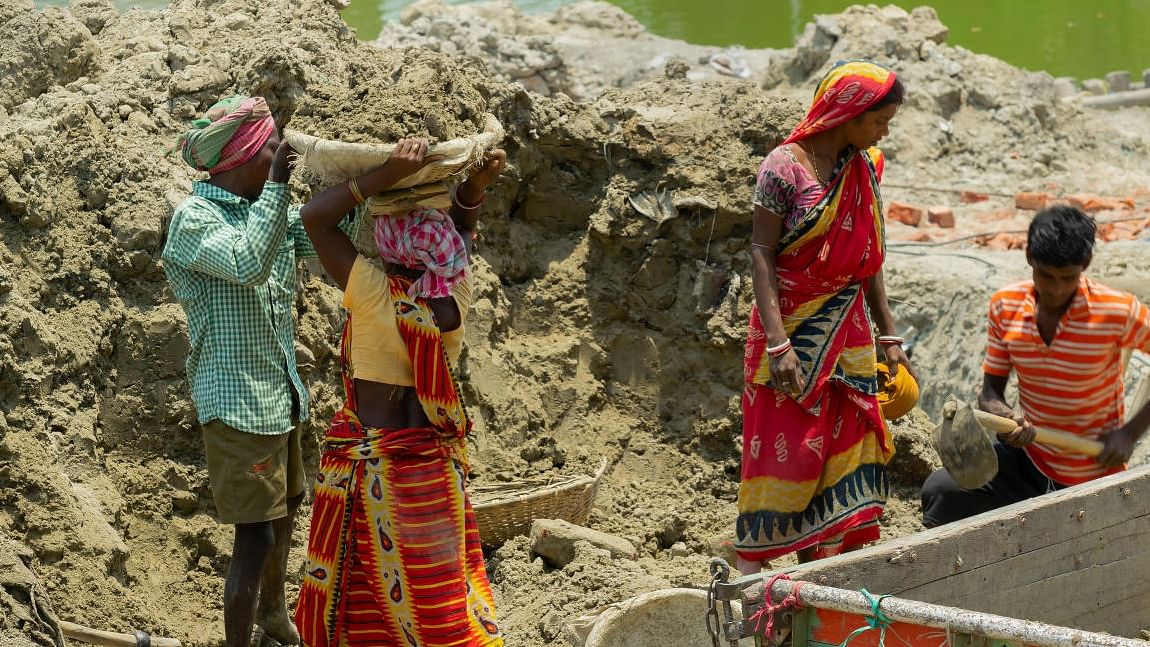
This was never going to be an easy Union Budget to present for any Finance Minister, even before last week. Despite all the hype about a resurgent Indian economy, almost all the indicators that matter suggested that economic conditions were far from positive. The only big exception was the stock market, which had been performing well beyond anything that could be justified by actual earnings or immediate prospects.
That was one of the indicators constantly trumpeted by the government’s official spokespersons, who suggested that this was an indication of the faith that domestic and foreign investors have in the potential and ongoing progress of the Indian economy.
Also Read | Govt should hike assistance under PM-KISAN, give tax sops for agritech startups: Industry
This allowed the government to gloss over the real economic conditions faced by most people. Those remain significantly worse than they were before the Covid-19 pandemic, and by some measures, even worse than a decade ago.
The now-famous Hindenburg report on Adani group companies dealt a sharp blow even to that rosy perception based on stock valuations, as it outlined a long series of major concerns and malpractices, casting serious doubt on the viability of these companies.
The resulting dramatic fall in their shares also affected the share values of the public sector banks and financial institutions that had become significantly embroiled in funding them.
This did much more than wipe out a lot of Gautam Adani’s notional wealth. It impacted the main holders of ordinary retail savings in India—the State Bank of India and the Life Insurance Corporation of India—thereby affecting hundreds of millions of people who had vested their life savings with them.
The Adani group, with its spectacular rise, has moved beyond being a simple reflection of extreme cronyism to becoming the dominant private player in India. As a result of the privatisation of public assets, its interests are spread across mining, power generation, ports, airports, green energy, agribusiness, cement and other sectors, affecting every Indian’s life in different ways.
As the enabled and privileged vehicle for the expressed economic ambitions of the Indian state, the continued survival and success of the Adani group companies have become both economically and politically crucial for the Modi government. So it is more than likely that it will move to save this group—directly and indirectly—and that of course will come with a cost. At the very least, the SBI and the LIC will have to be protected, even as they may be forced to continue to support the Adani group, because the financial and political fallout would otherwise be too dire.
This will have to be factored into any assessment of whatever Budget numbers the Finance Minister chooses to announce. And in many ways, this is deeply unfortunate, because there are many huge, even glaring, concerns in the Indian economy that need to be addressed more urgently.
Employment is possibly the most critical problem. The official Periodic Labour Force Survey of the NSSO found labour force participation rates in 2020-21 to be only 41.6% overall (57.5% for men and 25.1% for women), the lowest ever recorded. The government has claimed that it has increased formal employment, on the basis of workers registered with the Employees Provident Fund Organisation. Even using this dubious indicator, only 46.34 million workers contributed to the scheme in 2021-22 — a decline of 5% from pre-pandemic levels.
Meanwhile, despite all the incentives thrown at the corporate sector, private investment has barely picked up and remains sluggish. This is, essentially, because of the lack of domestic demand. More than half of workers experience lower money wages than before the pandemic, and real wages are down for the vast majority. Household incomes in 2022 were 10% below their pre-Covid average, according to CMIE surveys. Farmers continue to suffer volatile and low incomes. The ballooning incomes and wealth of the top 10% — and of the richest 1% — cannot make up for this, and sustained growth of the economy will not occur until private investors can benefit from a revival in the mass consumption market.
So, the FM’s focus should really be on reviving domestic demand and employment, through much larger allocations for social spending. The allocation for the MNREGA, the rural employment guarantee programme, should be tripled from its inexcusably low current level. There should be a preliminary allocation to enable an urban employment guarantee programme, building on the efforts of some states. Much more funds need to be provided for health, education (which has suffered a huge blow from the pandemic) and agriculture. These are obvious and immediate requirements. However, recent events create the fear that instead of bailing out the Indian people, the government’s finances will actually be directed to bailing out its cronies.
(The writer is an award-winning economist)